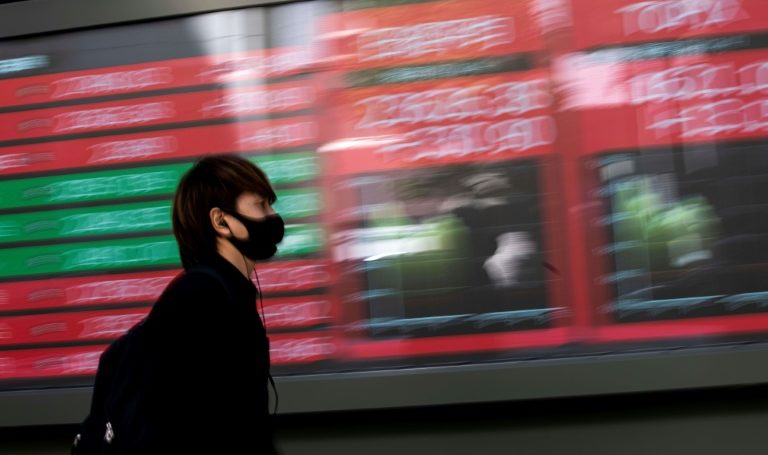When trading on financial markets, whether it be foreign exchange (forex), a stock market index, or a share, the new investor will encounter several popular trading strategies. To gain advice for those entering the arena for the first time, Digital Journal caught up with financial trading experts at CMC Markets. The assessment includes advantages and disadvantages; risks and possibilities.
This connection reveals a guide to these trading strategies highlighting their benefits and drawbacks.
News trading strategy
A news trading strategy involves trading based on news and market expectations, both before and following news releases. Traders will need to assess the news immediately after it’s released and make a quick judgement on how to trade it. Understanding these differences in market expectations is crucial to success when using a news trading strategy.
Benefits of news trading
The ability to define an entry and exit strategy. Entering and exiting a trade is based on how both the market and individual trader interpret the news, which is commonly outlined in a trader’s plan.
Drawbacks of news trading
Depending on the type of news, trading positions may be open over several days. Any positions that are left open overnight incur overnight risk, such as news impacting the price of the stock. News traders need to understand how certain announcements will affect their positions and the wider financial market. Additionally, they need to understand news from a market perspective and not only subjectively.
EOD trading strategy
The end-of-day (EOD) trading strategy involves trading near the close of markets. EOD traders become active when it appears likely that the price is going to ‘settle’ or close. This strategy requires the study of price action in comparison to the previous day’s price movements. EOD traders can then speculate how the price could move based on the price action and decide on any indicators that they are using in their system.
EOD trading can be a good way to start trading, as there is no need to enter multiple positions. Traders can analyse charts and place market orders either in the morning or at night, so it can be significantly less time-consuming in comparison to other strategies.
However, overnight positions can incur more risks, but this can be mitigated if you place a stop loss order. Guaranteed stop-losses are even more useful to mitigate risks.
Swing trading strategy
The term ‘swing trading’ refers to trading both sides on the movements of any financial market. Swing traders aim to ‘buy’ a security when they suspect the market will rise. Otherwise, they can ‘sell’ an asset when they suspect that the price will fall. Swing traders take advantage of the market’s oscillations as the price swings back and forth, from an overbought to oversold state.
Swing trading can be more suitable for people with limited time in comparison to other trading strategies. Nonetheless, it does require some research to understand how oscillation patterns work. Swing trading involves trading ‘both sides’ of the market, so traders can go long and short across a number of securities.
Day trading strategy
Intraday trading is suitable for traders that would like to actively trade in the daytime, generally as a full-time profession. They take advantage of price fluctuations in-between the market open and close hours, often holding multiple positions, but do not leave positions open overnight in order to minimise the risk of overnight market volatility. It’s recommended that these types of traders follow an organised trading plan that can quickly adapt to fast market movements.
With this approach, there is no overnight risk. By definition, the strategy requires no trade is left open overnight. Yet to be successful, traders should utilise a pre-determined strategy, complete with entry and exit levels, to help manage their risk.
Trend trading strategy
This strategy describes when a trader uses technical analysis to define a trend, and only enters trades in the direction of the pre-determined trend. Trend traders do not have a fixed view of where the market should go or in which direction. Success in trend trading can be defined by having an accurate system to firstly determine and then follow trends. However, it’s crucial to stay alert and adaptable as the trend can quickly change.
Trend trading is suitable for people with limited time, after their trend identification system has been created. However, trend trades are often open over several days so they may incur more overnight risks than other strategies.
Scalping trading strategy
Traders who use a scalping strategy place very short-term trades with small price movements. Scalpers aim to ‘scalp’ a small profit from each trade in the hope that all the small profits accumulate. As a scalper, you must have a disciplined exit strategy as a large loss can eliminate many other profits that have accumulated slow and steadily.
Scalping is suitable for people who want to trade flexibly. Scalping only works in particular markets such as indices, bonds and some equities.
Position trading strategy
Position trading is a popular trading strategy where a trader holds a position for a long period of time, usually months or years, ignoring minor price fluctuations in favour of profiting from long-term trends. Position traders tend to use fundamental analysis to evaluate potential price trends within the markets, but also take into consideration other factors such as market trends and historical patterns.
Position trading allows traders to use high leverage, as the possibility of a mistake is smaller than in conventional trading. Position traders tend to ignore minor fluctuations that can become full trend reversals and result in significant losses.
When it comes to trading strategies, Digital Journal cautions that they can all perform well under specific market conditions. An important point based on the above is that the best trading strategy is a subjective matter.














